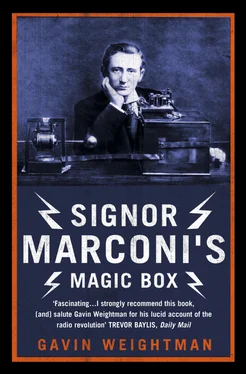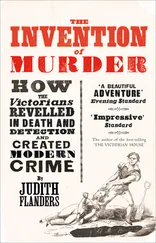1 ...7 8 9 11 12 13 ...17 Naturally enough, Preece replied that the patronage of the British Post Office could no longer be continued. He showed little concern over the loss of control of the new invention, evidently taking the view that it was not going to be of much practical use anyway.
Privately, Preece was pouring cold water on Marconi’s spark transmitter in confidential memoranda to the Post Office and the government, suggesting that really there was not much future in it, and in any case the patent was probably not secure, as Oliver Lodge had a prior claim to it. In his Toynbee Hall lecture Preece had said, to the cheers of the audience, that he would see to it that the Post Office would fund Marconi. But the promised £10,000 had not been forthcoming. With his family firm, Marconi now had the funds and the freedom to set up whatever experiments he wished. As he had become convinced that the most promising practical use of wireless was sending messages from ships to shore, he headed for the coast to test the range and flexibility of wireless telegraphy.

This was the heyday of the English seaside resort, before the new fashion for sunbathing drew the wealthy to the Mediterranean in the summer months. The luxury Blue Trains steamed down to the French Riviera only in winter, when the mild climate attracted the English aristocracy who developed the resorts of Nice and Cannes. Queen Victoria herself liked to stay in Hyères, near Toulon, but not beyond May, when the heat became unbearable and everyone returned north, the French to Honfleur and Deauville on the Normandy coast, and the English to their favoured grand hotels in Eastbourne, Bournemouth and other fashionable seaside towns.
The railways had opened up many resorts to day-trippers from London, and the south coast of England was becoming socially segregated as the ‘quality’ sought refuge from brash day-tripper resorts like Brighton in the more exclusive havens and coves. Aristocratic and royal families from all over Europe would spend time in Cowes on the Isle of Wight, a short ferry-ride from the coast. In August there was Cowes Regatta, a gathering of the wealthy and the upper crust who raced their huge yachts and enjoyed a splendid social round. Queen Victoria’s favourite retreat was Osborne House, close to Cowes, and she spent most summers here in her old age, enjoying the fresh sea air as she was wheeled around the extensive grounds in her bath-chair. On the white chalk clifftops of the island were grand hotels, those on the southern coast with a view across the Channel to France. Among them was the Royal Needles Hotel at Alum Bay, on the very western tip of the island.
It was in rented rooms at the Royal Needles that Marconi established the world’s first equipped and functioning wireless telegraphy station in November 1897. An aerial 120 feet high with a wire-netting antenna was erected in the grounds, without, it seems, giving rise to any complaints from other residents. In various rooms of the hotel were pieces of equipment for transmitting and receiving, and workshops where coils of wire were wound, wax was melted for insulation, and metals filed down for experimental versions of the receiver or coherer.
The location was chosen so that Marconi could test his equipment at sea and as a means of communication between ships and the shore. In the summer months, when the coast teemed with tourists and the horse-drawn bathing machines were trundled into the chilly waters of the Channel for women bathers to enjoy a discreet dip, coastal steamers ran regularly from the pier at Alum Bay to the resorts of Bournemouth and Swanage to the west. Marconi negotiated to fit wireless telegraphy equipment to two of these, the May Flower and the Solent, so that he could test the range and effectiveness of his station at the hotel. When he and his engineers were transmitting, guests were intrigued by the crackle and hiss of the sparks which generated the mysterious and invisible rays that activated the Morse code tickertape on the ships.
English hotels offered the young inventor comfort and fine food, a place where his mother and older brother Alphonso as well as the staff of engineers he was gathering around him could stay. Though Marconi and his mother had no time to enjoy the glamorous social life of London, they were able to find some relaxation on the breezy south coast of England. After Alum Bay another station was opened at the Madeira Hotel in Bournemouth, fifteen miles down the coast. Bournemouth had many distinguished visitors and residents in the nineteenth century: Charles Darwin had stayed there in the 1860s; the beautiful Emilie Charlotte le Breton, known by her stage name Lillie Langtry, lived in a house in Bournemouth provided by her lover, the Prince of Wales, in the 1880s; Robert Louis Stevenson had written The Strange Case of Dr Jekyll and Mr Hyde in Bournemouth while recovering from ill-health; and the artist Aubrey Beardsley had only recently left the resort after a period of convalescence when Marconi arrived.
The Bournemouth station first went into operation in January 1898, just before a blizzard blanketed the south coast in deep snow. Newspaper reporters had gathered in Bournemouth, where William Gladstone, the former Prime Minister and grand old man of British politics, was seriously ill. The weight of snow brought down the overhead telegraph wires, and communication with London was cut. It was characteristic of Marconi’s opportunism and instinct for publicity that he arranged for the newly opened station at the Madeira Hotel to send wireless messages to the Royal Needles Hotel, from where they could be forwarded to London by the telegraph links from the Isle of Wight, which were still open. In the event, Gladstone recovered sufficiently to return to his home, where he died in May 1898.
Marconi fell out with the management of the Madeira Hotel – it is not clear if the dispute was about money or the nuisance his wireless station caused to other guests – and moved his station to a house in Bournemouth, and then finally to the Haven Hotel, a former coaching inn in the adjoining resort of Poole. This became a home from home for him for many years, long after the station at the Royal Needles Hotel was closed down. After a day in which the Haven’s guests were entertained by the crackling of Marconi’s aerial, the inventor would often sit down at the piano after supper. Accompanied by his brother Alfonso on the violin and an engineer, Dr Erskine Murray, on cello, the trio would play popular classical pieces as the prevailing south-west wind rattled the hotel windows. Annie Marconi often stayed to look after her son, and those evenings in Poole were among the most delicious and poignant of her life. She was to see Guglielmo less and less as he pursued with steely determination his ambition to transmit wireless signals further and further across the sea. For the time being, however, the fame he had already achieved was a vindication of her faith in him, and indeed of the great risks she had taken in her own life.
On 8 August 1898 the airwaves crackled with one of the first text messages in history: ‘Very anxious to have cricket match between Crescent and Royal Yachts Officers. Please ask the Queen whether she would allow match to be played at Osborne. Crescent goes to Portsmouth, Monday.’ It was sent from the royal yacht Osborne , off the Isle of Wight, to a small receiving station set up in a cottage in the grounds of Osborne House. Queen Victoria’s reply was tapped back across the sea: ‘The Queen approves of the match between the Crescent and Royal Yachts Officers being played at Osborne.’
Читать дальше













